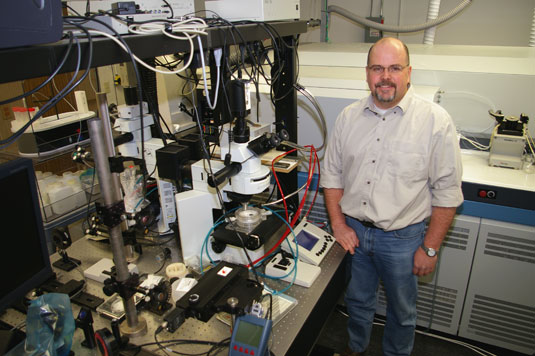Professor, School of the Environment
Head - GLIER Element and Heavy Isotope Analytical Laboratories
Hybrid Appointment - School of the Environment and GLIER
Phone: 519-253-3000 x 2496
Office: Memorial Hall Room 305/ GLIER Room 315
e-mail: Joel Gagnon
Expertise:
Analytical and applied environmental chemistry and geochemistry
Quadropole and multicollector mass spectrometry
Laser ablation element and isotope microanalytical method development and application
Laser/matter interaction studies
Environmental and geological tracer studies
Hydrothermal mineral deposits
Environmental forensics
Education:
B.Sc. (Honours) - Geology, University of Windsor, Windsor, ON
M.Sc. - Geology, University of Windsor, Windsor, ON
Ph.D. - Geology, McGill University, Montreal, QC
Professional Certifications:
Certified Professional Geologist, American Institute of Professional Geologists
Licensed Professional Geologist, State of Indiana
Element and Heavy Isotope Analytical Laboratories:
Instrumentation and research foci
Canada Foundation for Innovation Research Facilities Navigator
Online Research and Professional Profiles:
Google Scholar
ResearchGate
LinkedIn
Student Opportunities:
Our research group is currently seeking highly motivated students to pursue challenging M.Sc. and Ph.D research opportunities. These projects involve understanding metal cycling in aqueous systems, including low temperature (i.e., environmental) and higher temperature (i.e., mineral deposits) environments.
Depending on the interests of the applicant, the focus of these projects can be either analytical (e.g., method development) or applied (e.g., fluid inclusion and mineral microchemistry). Projects involving mineral deposits applications can be conducted in collaboration with researchers in School of Environment. Projects involving environmental applications can be conducted in collaboration with researchers in GLIER.
We are particularly interested in students that want to work on the development and application of microsampling techniques (specifically laser ablation) to the elemental and isotopic analysis of geologic (e.g., fluid inclusions) and biologic (e.g., otoliths, statoliths) media. Students will have access to state-of-the-art excimer and femtosecond laser ablation systems and elemental and isotopic analytical capabilities.

